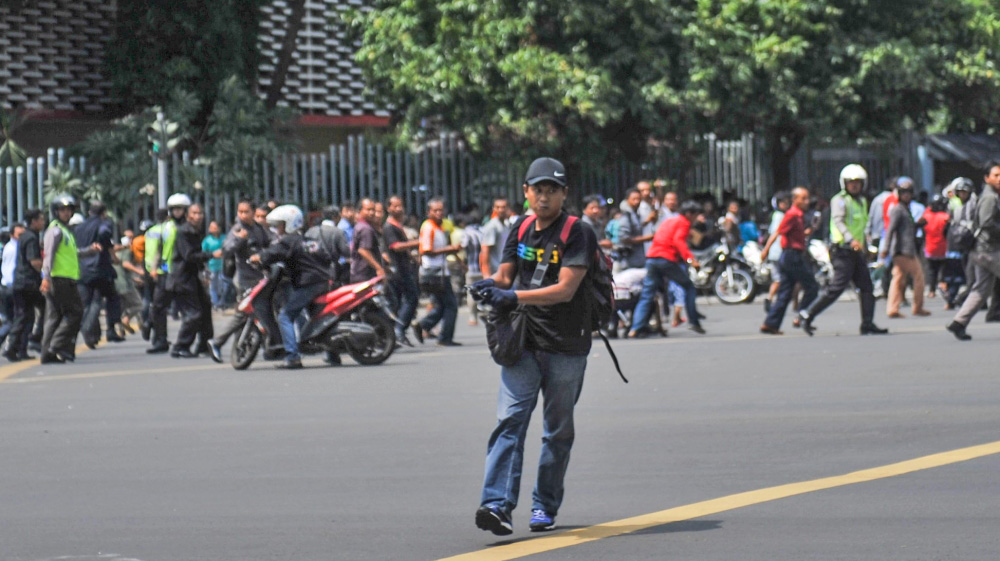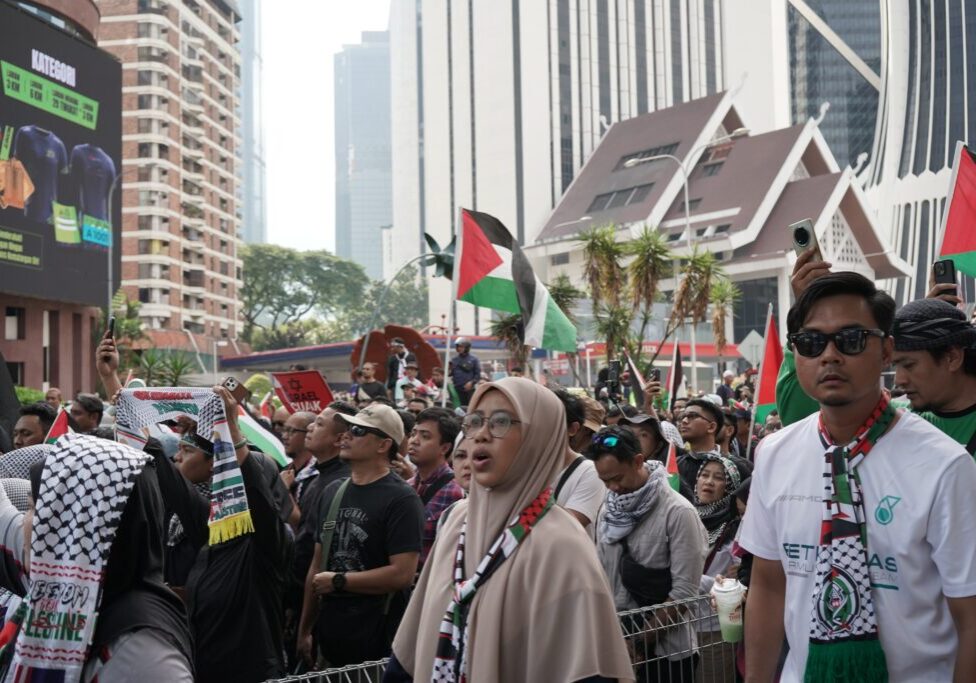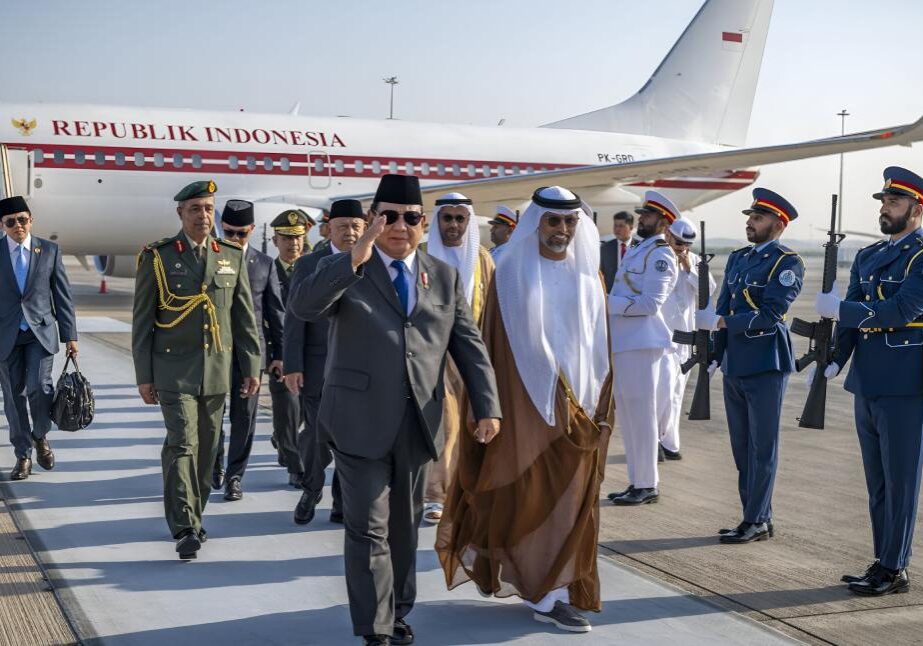Australia/Israel Review
ISIL’s bid to unite Southeast Asian jihadists
Feb 4, 2016 | Zachary Abuza

Zachary Abuza
The January 14 terrorist attack in Jakarta has renewed fears of terrorism in the world’s largest Muslim country. It was the first major terrorist attack in the country since 2009, when a cell of the al-Qaeda-linked Jemaah Islamiyah (JI) detonated two bombs at the JW Marriott and Ritz Carlton hotels in Jakarta.
People were caught off guard, but they shouldn’t have been. The threat of a new wave of Islamist terrorism has been growing steadily in the past year and a half, with the rise of the Islamic State of Iraq and the Levant (ISIL).
ISIL’s rise reinvigorated terrorist networks across the region that had been in utter disarray since 2010, when a major training camp in Aceh was taken down and the remainder of JI’s leadership was killed or arrested. Since then, JI has been defunct, unable to plan and execute a sustained campaign of violence. What was left was divided by debates over targeting, strategy, tactics and ego, but most of all, the inability to effectively re-organise in the face of a constant dragnet by regional security forces.
ISIL changed that: While the al-Qaeda linked al-Nusrah may have attracted the first Southeast Asians to Iraq and Syria, nothing escalated the flow more than ISIL’s success, territorial control, and slick propaganda machine, which has increasingly been publishing in the Bahasa language. There have been roughly 1,000 Southeast Asians who have traveled to Iraq and Syria, though that number includes family members and children. There are enough Southeast Asians that, since late 2014, there has been a Bahasa language company, Katibah Nusantara, fighting from Raqqa. But that has given them the opportunity to train, regroup, organise and cultivate a new generation of leadership.
The pathways to recruitment to ISIL are slightly different than in the past. In Indonesia, ISIL has been able to graft onto much of JI’s social network, owing in large part to people such as Abu Bakar Ba’asyir and Abdurrahman Aman’s early pledges of allegiance to ISIL. In addition to JI’s mosques, madrassas and kinship networks, ISIL members have effectively used the prisons as epicentres of recruitment and radicalisation. In Malaysia, ISIL’s recruitment has been broader based than JI’s traditional networks. Recruitment has represented a cross section of society, including radical youth, professionals and even members of the security forces.
In both countries the role of social media, especially ISIL’s incredibly well produced social media campaign, has been a key driver of recruitment. Their propaganda is tailor made for young, wired youth. But what has really taken security forces by surprise is how much faster the radicalisation and recruitment process is with ISIL. Membership into JI was a gradual process – in the case of ISIL it is a matter of days.
While some point to Indonesia’s culture of tolerance and religious modernisation to explain why there are relatively few Indonesians in ISIL’s ranks, members of ISIL point to something altogether different: the logistical logjam. Several key financiers have been taken down, while increased policing of flight manifests by Malaysian and Indonesian security forces has made getting to Iraq and Syria much harder. Turkish authorities have also deported dozens of Southeast Asians trying to enter Syria.
Let me make five points about the attack’s significance.
First, once again many analysts are dismissive of the attack due to the low death toll: only eight died, including four attackers, though twenty-six were wounded. This is a very dangerous line of analysis. The death toll was low due to the fact that police were in the vicinity, and were able to respond in three minutes. In Jakarta traffic, that is nothing short of miraculous. And the police – not the elite counter-terrorism force Densus-88 – displayed incredible courage and professionalism. Even so, they engaged the eight militants in nearly an hour long firefight, which distracted the militants from further targeting civilians.
Second, only one of the eight militants had small arms training. Indeed he had been previously arrested for training at the Aceh camp in 2010 where that type of barricade style attack was exactly what was being plotted. And the weaponry used was old and unsophisticated. But we need to be prepared when a critical mass with combat experience returns and a cell is able to acquire better arms. And this is a constant: last week, a six-man cell was busted for acquiring nine firearms while in prison.
Third, two of the eight attackers had already served jail time; i.e. in this attack alone there was a recidivism rate of 25%. Indonesian security forces deserve a lot of credit for all that they have accomplished since 2002. But the prisons have long been the weak link in the counter-terrorism enterprise. Militants can opt to go through a disengagement program, but it is not a requirement for release and it is woefully under-resourced. Moreover, with relatively short prison terms for terrorism offences, there is no incentive to go through such a program: it doesn’t make you eligible for parole. Indonesia desperately needs the resources to engage in post-release monitoring and counselling.
Fourth, we need to emphasise that the attack was inspired, organised and funded from overseas. The reason for this is clear and we need to see the attack for what it really was: an attempt to provide leadership for a disparate jihadist community in Southeast Asia. Since 2010, there has been no leadership or even ability and willingness to effectively cooperate. ISIL seeks primacy. Having fiery orators and clerics is necessary but insufficient. Khatibah Nusantara understands that you lead through action.
It is not enough for Bahrun Naim and Muhamad Wandy Muhamad Jedi to serve in the front lines in Syria. There they are simply cannon fodder. They need to execute attacks in order to broaden ISIL’s reach. That gives them clout within the community and it allows them to go to the ISIL leadership for resources and support for future operations. But most of all, it allows themselves to prove that Katibah Nusantara is the vanguard organisation in the region.
There is no shortage of groups in the region that have pledged loyalty to ISIL: Mujiheddin Indonesia Timur (MIT), Jamaat Anshaur Tauhid (JAT) in Indonesia, the Abu Sayyaf, the Bangsamoro Islamic Freedom Front and the Anshaur al Khalifa in the Philippines. But without effective leadership, they are simply autonomous cells or groups, which use their claim of loyalty to ISIL for short term gains.
While Naim blogged after the Jakarta attack that the operation was revenge for the ongoing offensive against the MIT in Poso, Central Sulawesi, that was besides the point. This attack was to outbid rivals.
Fifth, we need to expect more such attacks. These barricade-style attacks have low barriers to entry, require only rudimentary weapons, limited (if any) training, no technical expertise, and they are very cheap. But they deliver a high probability of creating mass casualties and garnering media attention. More to the point, in the competition for primacy of the jihadist community, rival groups will have to outbid these attacks and launch their own.
And this was not simply an emulation of Paris. This has been a tactic employed (though not successfully executed) in Southeast Asia since 2010.
But they are a tool in the toolbox. There have already been four major bombing plots foiled in Malaysia since mid-2014, a country that was spared during JI’s campaign of terror from 2002-2010. And in March 2014 a suspected returnee from Syria attempted to detonate a chlorine bomb in a Jakarta mall. Katibah Nusantara has already deployed 12 Southeast Asian suicide bombers, including eight Malaysians and four Indonesians. Two Malaysian suicide bombers were responsible for the deaths of over 30 people since the end of December 2015 alone, including 12 Iraqi policemen. Their exploits are propagandised and exalted at home. On 15 January, a suicide bomber was arrested in Malaysia.
So what needs to be done? First, there is a rush in Indonesia to pass a swath of new counter-terrorism legislation, including bills that would criminalise fighting with groups overseas, or to strip citizenship from those that do. These are feel good measure as that would probably be counter-productive and ineffective. The intelligence services want the right of preventative detention, but this is politically untenable. The Indonesian military is asserting itself in a counter-terrorism role, but that is likely going to come at the expense of what has otherwise been a very solid performance by Densus-88. The government has banned 34 websites proffering ISIL propaganda since the attack.
Instead, Indonesia should focus on what has worked to date: effective policing under civilian leadership, supported by effective intelligence and an encyclopaedic knowledge of terrorist institutions and genealogies. It needs more resources in prisons and post-release monitoring. While trying to purge the internet of ISIL propaganda is a fool’s errand, the government should focus on known encrypted networks used by the group, as well as develop the algorithms to really understand the nodes of recruitment and radicalisation. Surgical strikes are far more effective than blunt instruments.
There must be more regional cooperation. ISIL is a regional threat, not an Indonesian threat. ISIL is a transitional organisation. Malaysian members of Khatibah Nusantara can as effectively inspire or plan attacks in Jakarta, as Indonesian members can recruit and plan attacks in Kuala Lumpur.
Finally, both the Malaysian and Indonesian governments have to stop enabling ISIL ideology though policies that pander to their own Islamist communities. In particular the governments have to stop banning Muslim sects, such as the Shi’ites, Ahmadi and other sects deemed “deviant” and illegal. That only serves to create a culture of intolerance that engages ISIL’s stark sectarian ideology.
The threat of terrorism is omnipresent in Southeast Asia. But the governments shouldn’t overreact. A modest increase in resources, effective and pro-active policing, intelligence collection, and cooperation with regional and international partners can do much to mitigate the threat.
Dr. Zachary Abuza is a professor at the National War College in Washington, DC, specialising in Southeast Asian politics and security. He is author of Militant Islam in Southeast Asia: Crucible of Terror (Lynne Rienner, 2003), amongst several other books.






